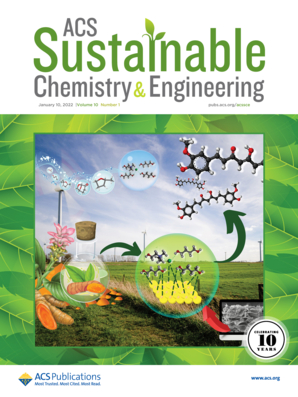Novel, Clean, and Controlled Method for Surface Oxidation of Photovoltaic Silicon Cutting Waste for High-Performance Si–C Anode Materials
IF 7.1
1区 化学
Q1 CHEMISTRY, MULTIDISCIPLINARY
引用次数: 0
Abstract
The trend of large-scale wafer thinning has led to increased surface activity, oxidation, and uneven oxidation interfaces in photovoltaic silicon cutting waste (SCW) produced by diamond wire cutting, posing significant challenges for its use as a silicon–carbon anode material. To address these issues, we propose a green recycling method that utilizes alkaline solutions to recover silicates from etched SCWs, avoiding the highly corrosive HF acid. By combining inexpensive chitosan (CTS) as a soft template, we achieve controllable reshaping of silicates into amorphous oxide layers (1 to 16 nm) on submicron SCW surfaces. This process involves a one-step method in a vacuum autoclave, which simultaneously eliminates the chitosan template and forms both the oxide layer and the phenolic resin. Unlike self-crystallizing oxide layers, the amorphous layers ensure uniform expansion and contraction, facilitate Li+ transfer, and introduce structural defects, enhancing lithium storage performance. The resulting Si@SiOx@C composite with a 5 nm thick oxide interface significantly improves the cycling performance, coulombic efficiency, and rate capability of the silicon–carbon material, achieving a reversible capacity of over 1000 mAh g–1 after 200 cycles at 1 A g–1. This work demonstrates the value-added utilization of submicron SCWs in the commercial production of high-performance silicon-based lithium-ion battery anodes.

求助全文
约1分钟内获得全文
求助全文
来源期刊

ACS Sustainable Chemistry & Engineering
CHEMISTRY, MULTIDISCIPLINARY-ENGINEERING, CHEMICAL
CiteScore
13.80
自引率
4.80%
发文量
1470
审稿时长
1.7 months
期刊介绍:
ACS Sustainable Chemistry & Engineering is a prestigious weekly peer-reviewed scientific journal published by the American Chemical Society. Dedicated to advancing the principles of green chemistry and green engineering, it covers a wide array of research topics including green chemistry, green engineering, biomass, alternative energy, and life cycle assessment.
The journal welcomes submissions in various formats, including Letters, Articles, Features, and Perspectives (Reviews), that address the challenges of sustainability in the chemical enterprise and contribute to the advancement of sustainable practices. Join us in shaping the future of sustainable chemistry and engineering.
 求助内容:
求助内容: 应助结果提醒方式:
应助结果提醒方式:


